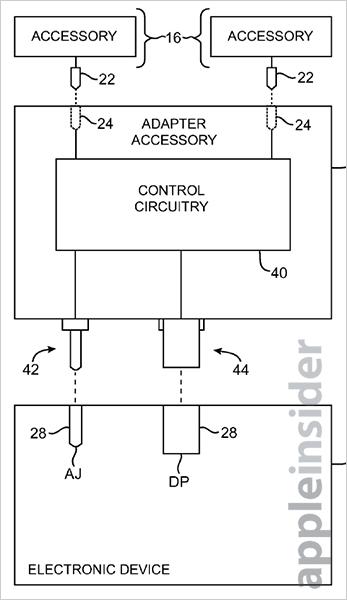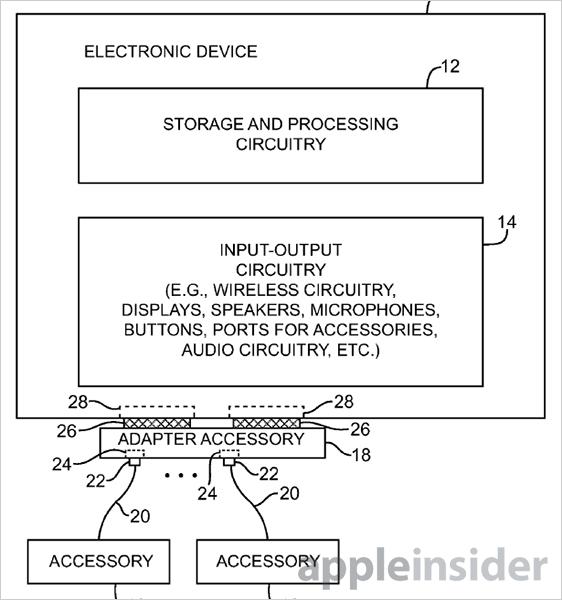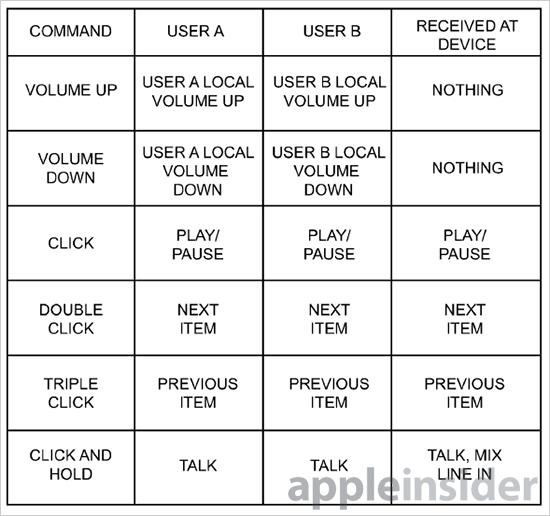Apple's smart audio splitter lets multiple users view content on a single device
The U.S. Patent and Trademark Office on Tuesday published an Apple patent describing an accessory akin to an advanced headphone splitter, which allows for independent volume changes, media controls and communication via an inline mic.
At first blush, Apple's U.S. Patent No. 8,437,481 for an "Adapter for connecting accessories to an electronic device" might seem like an unnecessary invention as simple hardwired designs already exist for splitting an audio feed. A closer look, however, reveals the proposed accessory is much more than a feed splitter.
The patent calls for an adapter that interfaces with a portable electronic, like an iPad, via its dock connector, allowing for two-way communication between the two devices. An alternative mode of connection also integrates a headphone plug that receives signals from the headphone jack. Multiple users can connect to the adapter through ports, with each headset supporting independent volume adjustments as well as remote control and mic inputs.
Whereas conventional audio splitters merely use the single audio amplifier of a portable device, Apple's solution can support on-board amps to regulate proper frequency response and offer per-headphone control over volume output. In addition, the patented adapter has a tone generator to relay signals from an in-line remote control, such as those found in Apple's EarPods, to the host device.
A case example is provided in which two users are on a plane, watching the same movie on a single device. With Apple's adapter, one user is able to adjust listening volumes while the other user's levels are maintained. In this example, global settings like play/pause or fast forward/rewind can be controlled by either user.
Also supported is microphone input, which allows both users to communicate with each other during content viewing. The signals are processed through the host device and output on top of content audio.
While it remains unclear if Apple will create such a device for its iOS device lineup, some minor tweaks to the design, like the addition of wireless headset compatibility, could make for a highly versatile and useful accessory well-suited for collaborative projects or entertainment.
Apple's adapter patent was first filed for in 2008 and credits Timothy Johnson as its inventor.
 Mikey Campbell
Mikey Campbell













 William Gallagher and Mike Wuerthele
William Gallagher and Mike Wuerthele
 Christine McKee
Christine McKee
 William Gallagher
William Gallagher
 Malcolm Owen
Malcolm Owen
 Marko Zivkovic
Marko Zivkovic


 Wesley Hilliard
Wesley Hilliard







